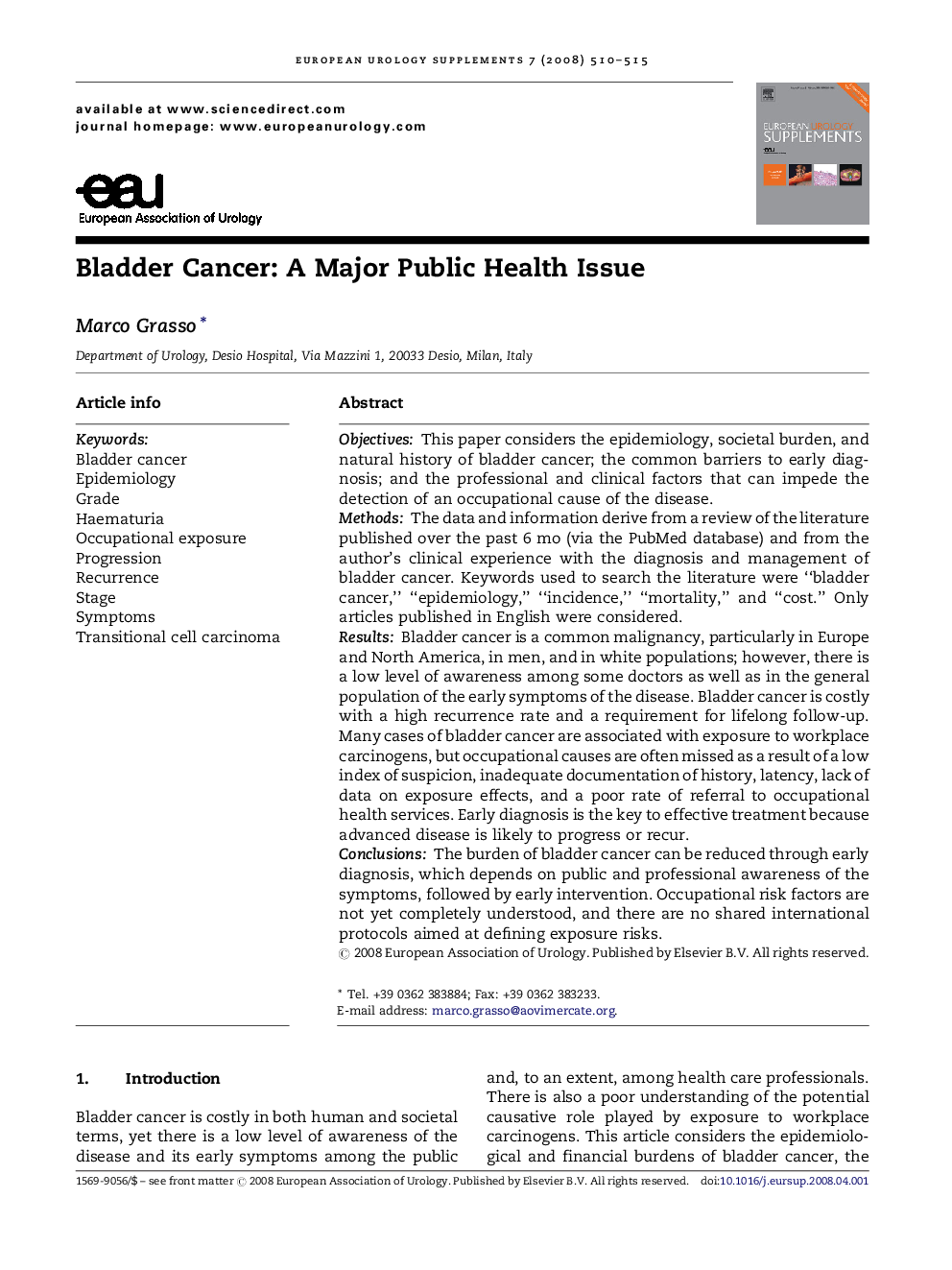| Article ID | Journal | Published Year | Pages | File Type |
|---|---|---|---|---|
| 3934479 | European Urology Supplements | 2008 | 6 Pages |
ObjectivesThis paper considers the epidemiology, societal burden, and natural history of bladder cancer; the common barriers to early diagnosis; and the professional and clinical factors that can impede the detection of an occupational cause of the disease.MethodsThe data and information derive from a review of the literature published over the past 6 mo (via the PubMed database) and from the author's clinical experience with the diagnosis and management of bladder cancer. Keywords used to search the literature were “bladder cancer,” “epidemiology,” “incidence,” “mortality,” and “cost.” Only articles published in English were considered.ResultsBladder cancer is a common malignancy, particularly in Europe and North America, in men, and in white populations; however, there is a low level of awareness among some doctors as well as in the general population of the early symptoms of the disease. Bladder cancer is costly with a high recurrence rate and a requirement for lifelong follow-up. Many cases of bladder cancer are associated with exposure to workplace carcinogens, but occupational causes are often missed as a result of a low index of suspicion, inadequate documentation of history, latency, lack of data on exposure effects, and a poor rate of referral to occupational health services. Early diagnosis is the key to effective treatment because advanced disease is likely to progress or recur.ConclusionsThe burden of bladder cancer can be reduced through early diagnosis, which depends on public and professional awareness of the symptoms, followed by early intervention. Occupational risk factors are not yet completely understood, and there are no shared international protocols aimed at defining exposure risks.
